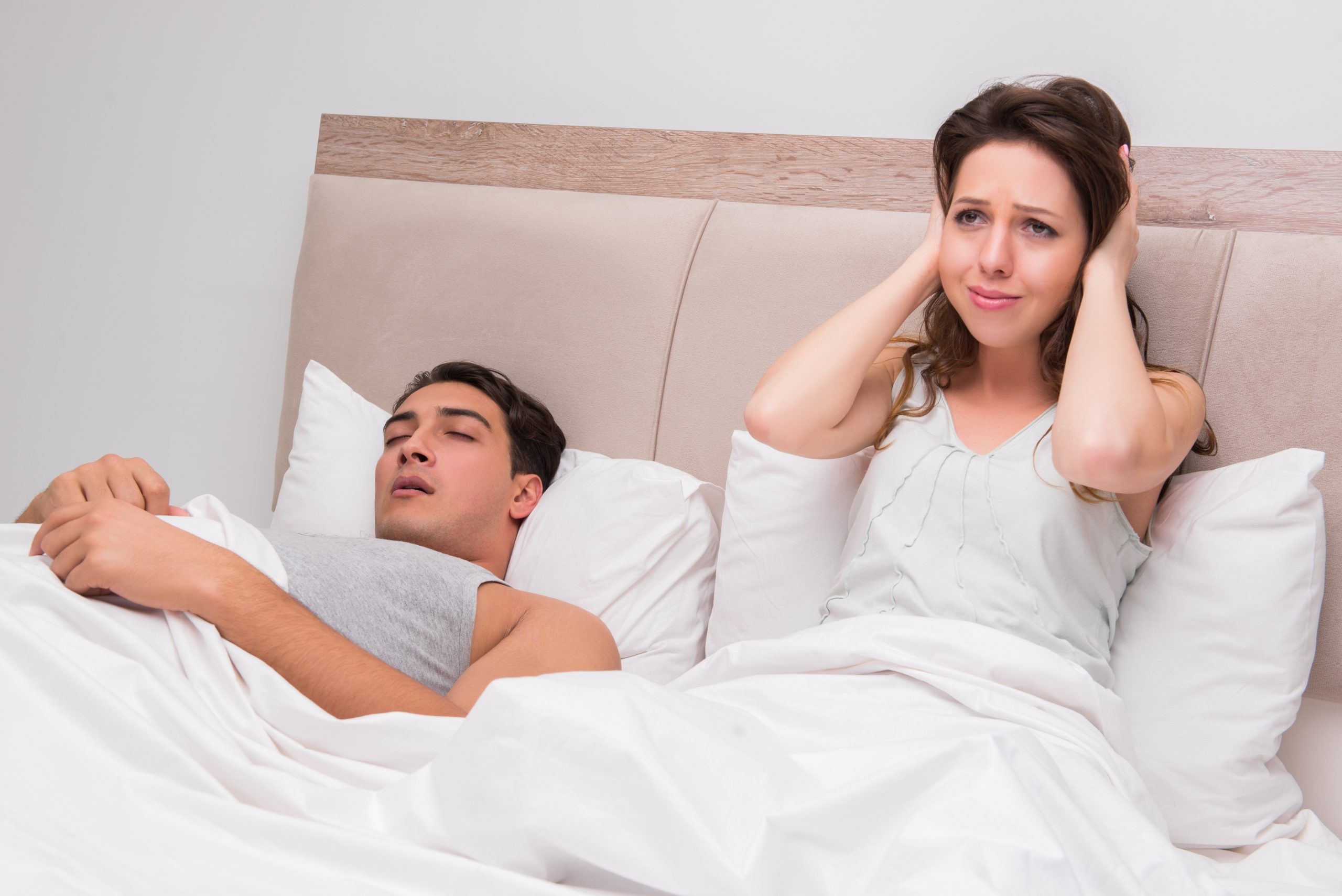Sleep Apnea
During normal sleep, breathing continues and varies according to the different stages of sleep. There are therefore accelerations, slowing of the breathing which involve minimal modifications of the oxygenation of the blood without significant consequence.
In sleep apnea syndrome, breathing is abnormal. It begins with difficulty because the upper airways behind the tongue tend to close. (This is actually the relaxation of the tissues of the back throat (tongue, soft palate …). The air can only pass by forcing loudly, which causes snoring. Then, the airways close completely and the air can no longer pass. This abnormal interruption of breathing is obstructive apnea. During this apnea, the air is no longer renewed in the lungs which causes a lowering of the oxygen level in the lungs.
However, the sleeper continues to have more and more significant respiratory movements as he struggles to try to get the air through. The micro-alarm clock (which you don’t realize) allows the airways to re-open a little and breathing to resume loudly for a few moments … before a new apnea sets in. Each apnea can last from 10 seconds to 1 minute and recurs several times an hour. These repeated apneas cause a transient drop in oxygen in the blood and waking phases which disturb normal night’s rest.



There are three types of sleep apnea:
Obstructive sleep apnea: this is the most common form; it is caused by a narrowing of the pharynx which causes the muscles in the back of the throat to relax, which prevents air from circulating normally.
Central sleep apnea: it is caused by poor transmission of information from the brain to the muscles that control breathing
Mixed apnea: it combines the two previous forms.
Obesity, probably associated with aging and other factors, causes narrowing of the upper respiratory tract. Alcohol abuse and sedation worsen obstructive sleep apnea. Having a narrow throat, thick neck and round head (often family features) increases the risk of sleep apnea. Low levels of thyroid hormone (hypothyroidism) or excessive and abnormal growth due to excessive production of growth hormone (acromegaly) can contribute to obstructive sleep apnea. Sometimes a stroke can cause obstructive sleep apnea.
Sleep apnea is not dangerous in itself. It is its repetition all night (dozens or hundreds of times), night after night, which presents a real risk to health.
The stress that the heart and brain undergo with each apnea can lead to long-term complications: high blood pressure, cardiovascular disease, stroke, diabetes.
For example, almost a third of people with high blood pressure also have sleep apnea. Likewise, two-thirds of people with type 2 diabetes are also affected by this disorder.
Sleep apnea is accompanied by severe snoring, feelings of suffocation or suffocation, non-restful sleep, etc.
Sleep apnea is not dangerous in itself. It is its repetition all night (dozens or hundreds of times), night after night, which presents a real risk to health.
The stress that the heart and brain undergo with each apnea can lead to long-term complications: high blood pressure, cardiovascular disease, stroke, diabetes.
For example, almost a third of people with high blood pressure also have sleep apnea. Likewise, two-thirds of people with type 2 diabetes are also affected by this disorder.
Sleep apnea is accompanied by severe snoring, feelings of suffocation or suffocation, non-restful sleep, etc.
Symptom (s)
Sleep apnea causes poor night quality.
It is distinguished by type events:
- agitated sleep ;
- significant snoring;
- multiple alarm clocks, sometimes anxious with an impression of oppression;
- profuse sweating;
- recurrent urges to urinate overnight …
- Sleep apnea disorders
- Sleep apnea can also lead to:
- drowsiness during the day;
- permanent tiredness upon waking and a lack of energy;
- mood disorders (irritability, depression);
- morning headaches;
- decreased libido;
- memory and concentration problems.
This disorder is often associated with overweight or hypertension. It generally has a family, social and professional consequence.
Treatment
For light apneas, a change in lifestyle is recommended as a treatment.
- Lose weight: decreases the obstruction of the respiratory tract;
- Having a regular sleep schedule: reduces fatigue linked to sleep apnea;
- Sleeping on your side: promotes the opening of the respiratory tract;
- Exercise: promotes a healthy weight and improves the quality of sleep;
- Avoid alcohol and painkillers: reduces snoring;
- Quit smoking: decreases throat irritation.
For moderate to severe apneas, the same lifestyle modifications are proposed. Other measures are also added as treatment. The main treatment is “spontaneous continuous positive pressure ventilation”. In other words, using a face mask, constant air is supplied which keeps the throat open and prevents sagging of the soft tissue. The episodes of respiratory pauses are therefore reduced.
In addition, dental devices can also be worn to prevent the back of the throat tissue from loosening and to prevent the tongue from sinking into the mouth. Finally, surgery can be performed to remove the excess tissue. All these methods have essentially the same objective: to clear the airways in order to eliminate the stops of breathing.
